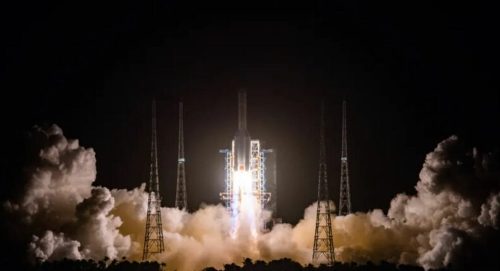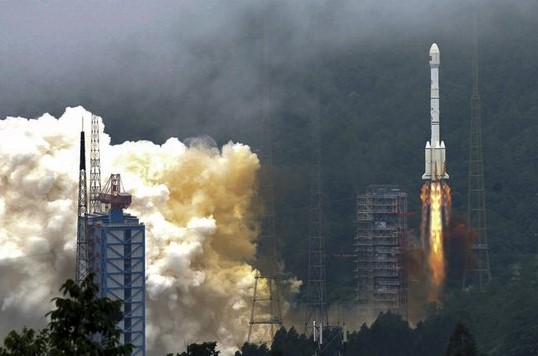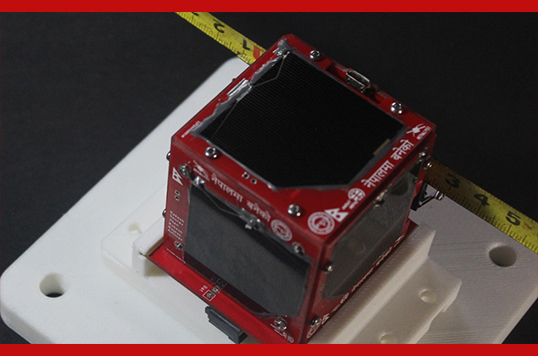
China launches ambitious mission to bring back samples from the Moon
"Chang’e 5 could bring back the first lunar dirt we’ve seen since 1976"
Today, China successfully launched its most ambitious mission to the Moon to date — this one designed to bring a handful of lunar rocks back to Earth before the end of the year. If successful, it’ll be the first time in nearly half a century that dirt from the Moon has been returned to Earth and the first time that China has retrieved materials from another world.
The mission, called Chang’e 5, is the latest in a long line of lunar missions that China has been conducting over the last decade. In 2013, the country made its first soft landing on the Moon with Chang’e 3, making China just one of three nations to put a spacecraft on the lunar surface. Then in December 2018, China launched Chang’e 4 and successfully put a lander and rover on the far side of the Moon in early 2019 — a feat that no other nation has accomplished.
SO FAR, ONLY TWO NATIONS HAVE EVER RETURNED MATERIALS FROM THE MOON
Now with Chang’e 5, China plans to bring back samples of the Moon. So far, only two nations — the United States and the former Soviet Union — have ever returned materials from the Moon. Chang’e 5 could soon be next, and lessons learned from this mission could put the country on course for even more complex flights to the Moon in the future.
“This is one thing that the Chinese space program is very good at,” Andrew Jones, a freelance reporter specializing in China’s space program, tells The Verge. “They set incremental targets and goals, and they build on what they’ve achieved and made more ambitious targets.”
But first, a lot of things have to go right, and Chang’e 5 is perhaps the most complicated mission that China has ever launched. For one thing, the mission is fairly heavy, with all of the hardware needed for the roundtrip Moon flight weighing in at about 8.2 metric tons or around 18,000 pounds. To get Chang’e 5 en route to the Moon, China used its most powerful rocket, the Long March 5. The rocket took off from the Wenchang Spacecraft Launch Site located in south China.
The Long March 5 lofted a total of four robotic spacecraft for Chang’e 5, which will work together to bring back between 2 to 4 kilograms of the lunar sample back to Earth, according to Jones. The quartet starts off its journey together, traveling to the Moon in a big pack. One of the four includes a service spacecraft that will help provide solar power and propel the group to the Moon. After entering the Moon’s orbit, two of the spacecraft — a lander and a vehicle to take off from the lander — will break away and descend to the surface. The lander will then use instruments to drill into the Moon, passing along the material it collects to the ascent vehicle sitting on top.
That ascent vehicle will then act as a mini-rocket, taking off from the Moon and meeting up with the hardware still in lunar orbit. Once it docks with the service spacecraft, the lunar sample will pass into the fourth spacecraft — a capsule designed to land back on Earth. The trio will then leave lunar orbit and head back to Earth. Eventually, the return capsule will break away with its precious materials inside. Since it will be coming in so fast from the Moon, the capsule will actually bounce off the Earth’s atmosphere once before diving toward the planet and eventually landing in Inner Mongolia.
IT SHOULD BE A QUICK MISSION, LASTING JUST 23 DAYS OR SO
All in all, it should be a quick mission, lasting just 23 days or so from launch to landing of the lunar material, Jones says. That’s because Chang’e 5 is not designed to survive the harsh lunar night, a two-week period that occurs every month when part of the Moon’s surface is plunged into darkness and temperatures can drop well below -208 degrees Fahrenheit (-130 degrees Celsius). To survive such an extreme environment, the surface spacecraft would need to be equipped with special heating instruments — such as radioisotope generators that radioactively decay over time and generate warmth. Previous Chang’e missions included these generators to survive the lunar night, but such materials are missing on Chang’e 5 since this is designed to be a quick “grab and go” mission.
That means in less than a month, China could bring back the first samples of the Moon returned to Earth since the Cold War era. US astronauts famously brought back lunar rocks collected during the Apollo missions in the 1960s and ’70s, while the former Soviet Union performed a handful of successful lunar sample return missions in the 1970s. In fact, the last time lunar rocks came back to Earth occurred in 1976 with the Soviet Union’s Luna 24 robotic probe.
Chang’e 5 is targeting a particularly enticing part of the Moon called Oceanus Procellarum. This unexplored area has relatively few craters on its surface compared to other parts of the Moon. One theory is that volcanic activity may have occurred in this area late in the Moon’s life, smoothing away craters that were there before. Getting samples from this region could provide scientists with a better understanding of when this volcanic activity might have occurred, providing a better snapshot of how the Moon formed and evolved over time.
“It’s a big deal for the science community in China, and also the data will be keenly followed by scientists internationally,” Jones says.
The complexity of Chang’e 5 is also a deliberate choice for China, according to Jones, as it will allow the country to test out how to rendezvous and dock spacecraft in orbit around the Moon. China could have opted for the ascent vehicle to take the lunar samples all the way back to Earth. But Jones notes that the meetup in lunar orbit is meant to test out capabilities needed on future missions. A mission designed to return samples from Mars could certainly draw from Chang’e 5. But it’s also important to note that this mission is very similar in its flight profile to that of NASA’s Apollo missions, which used similar techniques for putting people on the Moon.
“This is much more of an Apollo kind of mission profile than it was for the Soviet robotic lunar sample return,” says Jones. “So the idea is that they’re playing out and practicing for future crewed missions to the Moon.”
Source: theverge
Reviews are conducting a weekly contest. Answer a simple question and get a chance to win exciting gift hampers from Aiken Care Package. Go to our Facebook page for more details or also can check the details on our Instagram page.
Also Read:
REECHA SHARMA- MY SKIN CARE ROUTINE IS PRETTY NORMAL AND SIMPLE
GO SMS PRO IS LEAKING CONFIDENTIAL MESSAGES, DATA OF MILLIONS OF USERS EXPOSED
NOKIA 3.4 LAUNCHED IN NEPAL - PRICE, SPECS AND AVAILABILITY
XIAOMI BOUNCES BACK TO #1 POSITION IN THE SMARTPHONE MARKET IN NEPAL
WHY IS GAMING MOUSE BETTER THAN NORMAL MOUSE?
THINGS TO CONSIDER WHILE BUYING A GEYSER AND WATER HEATER
GM NEW BATTERIES CUT ELECTRIC CAR COSTS, INCREASE RANGE






